Foreword
Remembering Joe Carr, K4IPV
Preface
Part 1 Introduction
1 Introduction to radio frequencies
What are the 'radio frequencies'?
Why are radio frequencies different?
What this book covers
2 Signals and noise
Types of signals
Static and quasistatic signals
Periodic signals
Repetitive signals
Transient signals and pulse signals
Fourier series
Waveform symmetry
Transient signals
Sampled signals
Noise
Signal-to-noise ratio (SNR or Sn)
Noise factor, noise figure and noise temperature
Noise factor (FN)
Noise figure (NF)
Noise temperature ( Te)
Noise in cascade amplifiers
Noise reduction strategies
Noise reduction by signal averaging
Example
3 Radio receivers
Signals, noise and reception
The reception problem
Strategies
Radio receiver specifications
Origins
Crystal video receivers
Tuned radio frequency (TRF) receivers
Superheterodyne receivers
Heterodyning
Front-end circuits
Intermediate frequency (IF) amplifier
Detector
Audio amplifiers
Receiver performance factors
Units of measure
Input signal voltage
dBm
dBmV
dB
V
Noise
Signal-to-noise ratio (SNR or Sn)
Receiver noise floor
Static measures of receiver performance
Sensitivity
Selectivity
Front-end bandwidth
Image rejection
1st IF rejection
IF bandwidth
IF passband shape factor
Distant frequency ('ultimate') rejection
Stability
AGC range and threshold
Dynamic performance
Intermodulation products
-1 dB compression point
Third-order intercept point
Dynamic range
Blocking
Cross-modulation
Reciprocal mixing
IF notch rejection
Internal spurii
Part 2 Circuits
4 RF amplifiers
Noise and preselectors/preamplifiers
Amplifier configurations
Transistor gain
Classification by common element
Common emitter circuits
Common collector circuits
Common base circuits
Transistor biasing
Collector-to-base bias
Emitter bias or Îself-biasÌ
Frequency characteristics
JFET and MOSFET connections
JFET preselector
VHF receiver preselector
MOSFET preselector
Voltage-tuned receiver preselector
Broadband RF preamplifier for VLF, LF and AM BCB
Push-pull RF amplifiers
Types of push-pull RF amplifiers
Actual circuit details
Broadband RF amplifier (50 ohm input and output)
5 Mixers
Linear-vs-non-linear mixers
Simple diode mixer
The question of ÎbalanceÌ
Unbalanced mixers
Single balanced mixers
Double balanced mixers
Spurious responses
Image
Half IF
IF feedthrough
High-order spurs
LO harmonic spurs
LO noise spurs
Mixer distortion products
Third-order intercept point
Calculating intercept points
Mixer losses
Noise figure
Noise balance
Single-ended active mixer circuits
Balanced active mixers
Gilbert cell mixers
Passive double-balanced mixers
Diplexers
Bandpass diplexers
Double DBM
Image reject mixers
VHF/UHF microwave mixer circuits
6 Oscillators
Feedback oscillators
General types of RF oscillator circuits
Piezoelectric crystals
Piezoelectricity
Equivalent circuit
Crystal packaging
Temperature performance
Room temperature crystal oscillators
Temperature-compensated crystal oscillators
Oven-controlled crystal oscillators
Short-term stability
Long-term stability
Miller oscillators
Pierce oscillators
Butler oscillators
Colpitts oscillators
Overtone oscillators
Frequency stability
Temperature
Thermal isolation
Avoid self-heating
Other stability criteria
Use low frequencies
Feedback level
Output isolation
DC power supply
Vibration isolation
Coil core selection
Coil-core processing
Air core coils
Capacitor selection
Tempco circuit
Varactors
Frequency synthesizers
Reference section
Frequency synthesizer section
Output section
Automatic level control (ALC)
7 IF amplifiers and filters
IF filters: general filter theory
LÒ C IF filters
Crystal filters
Crystal ladder filters
Monolithic ceramic crystal filters
Mechanical filters
SAW filters
Filter switching in IF amplifiers
Amplifier circuits
Cascode pair amplifier
ÎUniversal’ IF amplifier
Coupling to block filters
More IC IF amplifiers
MC-1590 circuit
SL560C circuits
FM IF amplifier
Successive detection logarithmic amplifiers
8 Demodulators
AM envelope detectors
AM noise
Synchronous AM demodulation
Double sideband (DSBSC) and single sideband (SSBSC) suppressed carrier demodulators
Phasing method
FM and PM demodulator circuits
FosterÒ Seeley discriminator
Ratio detector
Pulse counting detector
Phase-locked loop FM/PM detectors
Quadrature detector
Part 3 Components
9 Capacitors
Units of capacitance
Breakdown voltage
Circuit symbols for capacitors
Fixed capacitors
Paper dielectric capacitors
Mylar dielectric capacitors
Ceramic dielectric capacitors
Mica dielectric capacitors
Other capacitors
Variable capacitors
Air variable main tuning capacitors
Capacitor tuning laws Ò SLC-vs-SLF
Special variable capacitors
Split stator capacitors
Differential capacitors
ÎTransmittingÌ variable capacitors
Variable capacitor cleaning note
Using and stabilizing a varactor diode
Varactor tuning circuits
Temperature compensation
Varactor applications
10 Inductors
Inductor circuit symbols
Inductance and inductors
Inductance of a single straight wire
Combining two or more inductors
Air-core inductors
Solenoid wound air-core inductors
Adjustable coils
Winding your own coils
Amidon Associates coil system
Using ferrite and powdered iron cores
Materials used in cores
Powdered iron
Ferrite materials
Making the calculations
Toroid cores
Example
Inductors and transformers
Broadband RF transformers
Winding toroid cores
Counting turns
Winding styles
Stabilizing the windings
Mounting toroids
Mounting multiple coils
Special mounting methods
High-power transformers
Binocular cores
Turns counting on binocular cores
Winding styles on binocular cores
Winding a binocular core
Ferrite rods
Bobbing along with a bobbin
Ferrite beads
Mounting ferrite beads
11 Tuning and matching
Vectors for RF circuits
LÒ C resonant tank circuits
Series resonant circuits
Parallel resonant circuits
Tuned RF/IF transformers
Construction of RF/IF transformers
Bandwidth of RF/IF transformers
Choosing component values for L– C resonant tank circuits
The tracking problem
The RF amplifier/antenna tuner problem
Example
The local oscillator (LO) problem
Trimmer capacitor method
Impedance matching in RF circuits
Transformer matching
Resonant transformers
Resonant networks
Inverse-L network
-network
Split-capacitor network
Transistor-to-transistor impedance matching
12 Splitters and hybrids
RF power combiners and splitters
Characteristics of splitter/combiner circuits
Resistive splitter/combiner
Transformer splitter/combiner
How it works
Mismatch losses
Modified VSWR bridge splitter/combiner
90 degree splitter/combiner
Transmission line splitter/combiners
90 degree transmission line splitter/combiner
Hybrid ring Îrat-raceÌ network
RF hybrid couplers
Applications of hybrids
Combining signal sources
Bi-directional amplifiers
Transmitter/receiver isolation
Quadrature hybrids
RF directional couplers
Conclusion
13 Monolithic microwave integrated circuits
Internal circuitry
Basic amplifier circuit
Other MAR-x circuits
Multiple device circuits
Mast-mounted wideband preamplifier
Broadband HF amplifier
Part 4 Measurement and techniques
14 Measuring inductors and capacitors
VSWR method
Voltage divider method
Signal generator method
Frequency shifted oscillator method
Using RF bridges
Maxwell bridge
Hay bridge
Schering bridge
Finding parasitic capacitances and inductances
Conclusion
15 RF power measurement
Power units
Types of RF power measurement
Methods for measuring RF power
Thermistor RF power meters
Bolometers
Self-balancing bridge instruments
Thermocouple RF power meters
Diode detector RF power meters
Circuits
Practical in-line bridge circuits
Micromatch
Monomatch
The Bird Thruline sensor
Calorimeters
Substitution flow calorimeters
Absolute flow calorimeters
Micropower and low power measurements
Error and uncertainty sources
Mismatch loss and mismatch uncertainty
16 Filtering against EMI/ RFI
Shielding
Filter circuits
RÒ C EMI/RFI protection
Feedthrough capacitors
General guidelines
17 Noise cancellation bridges
A simple bridge circuit
Bibliography
Index
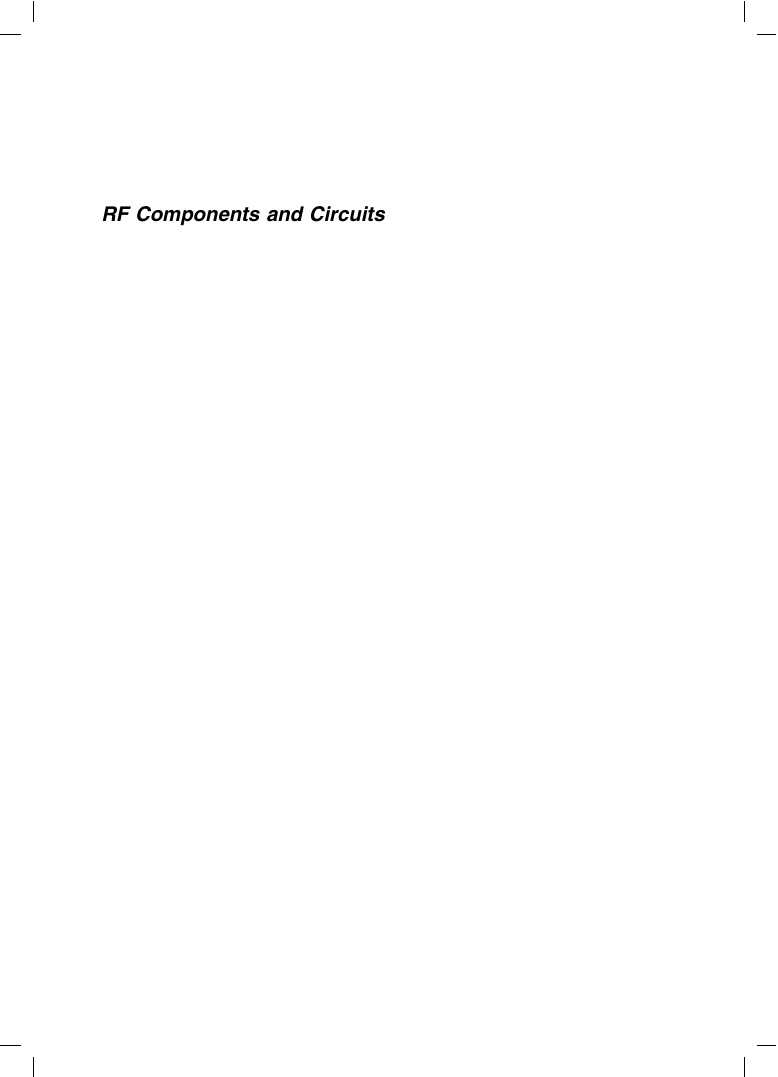


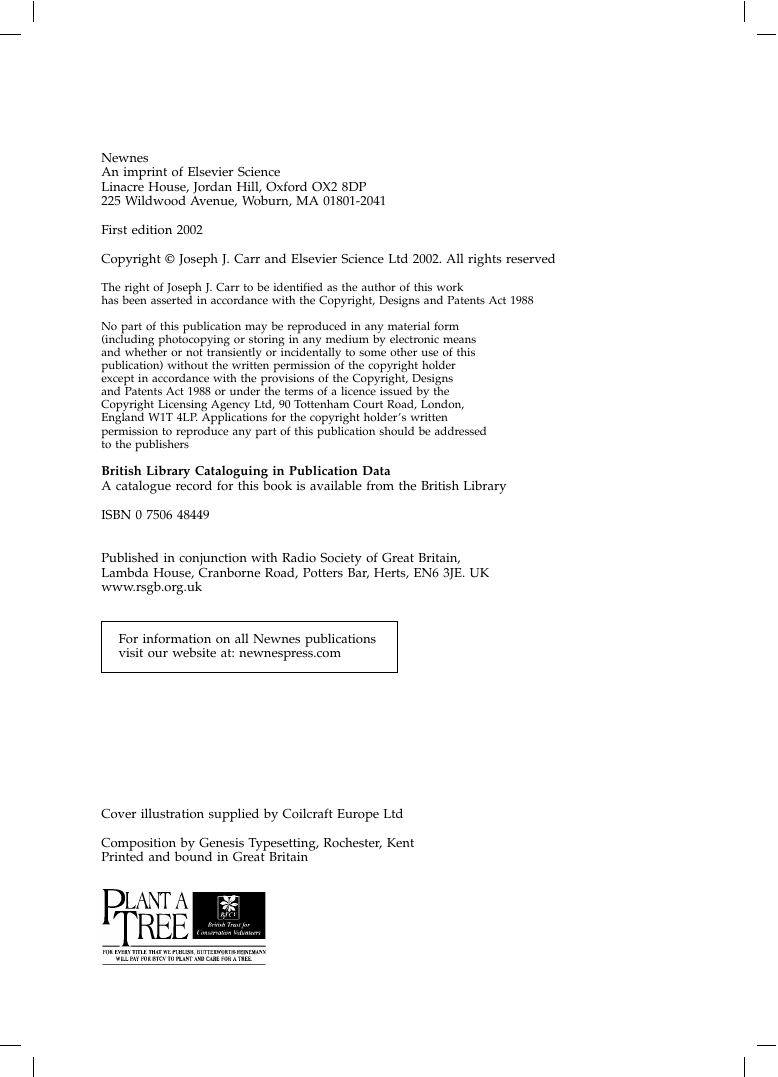
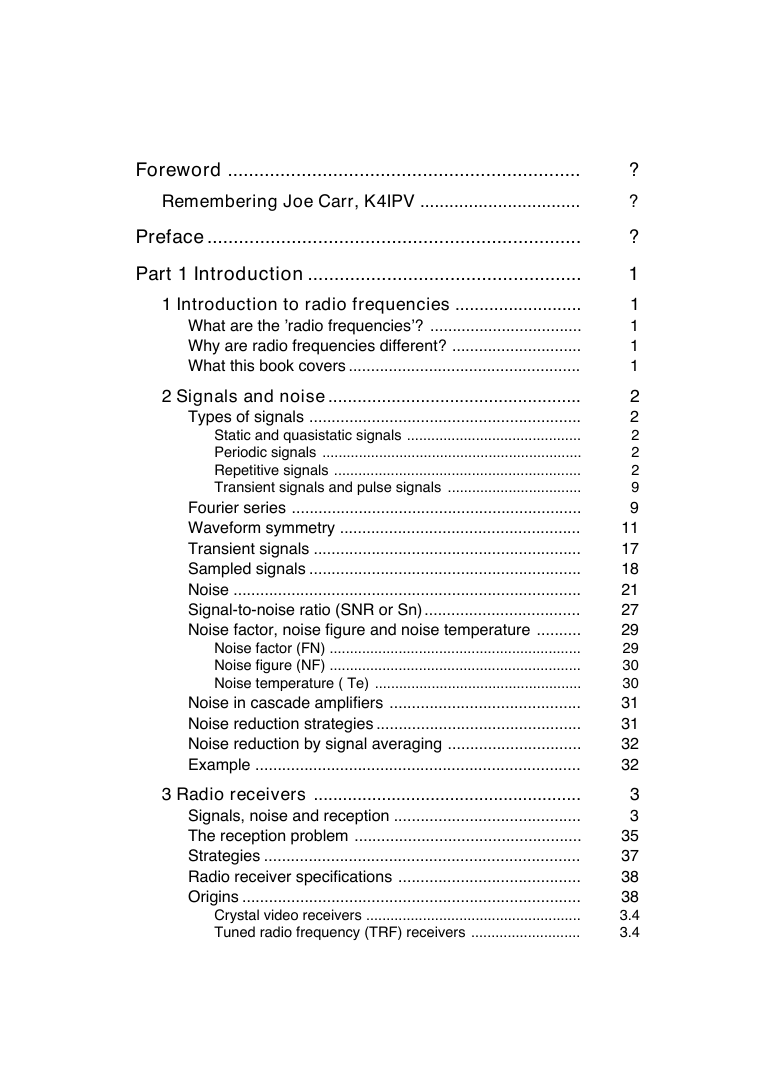
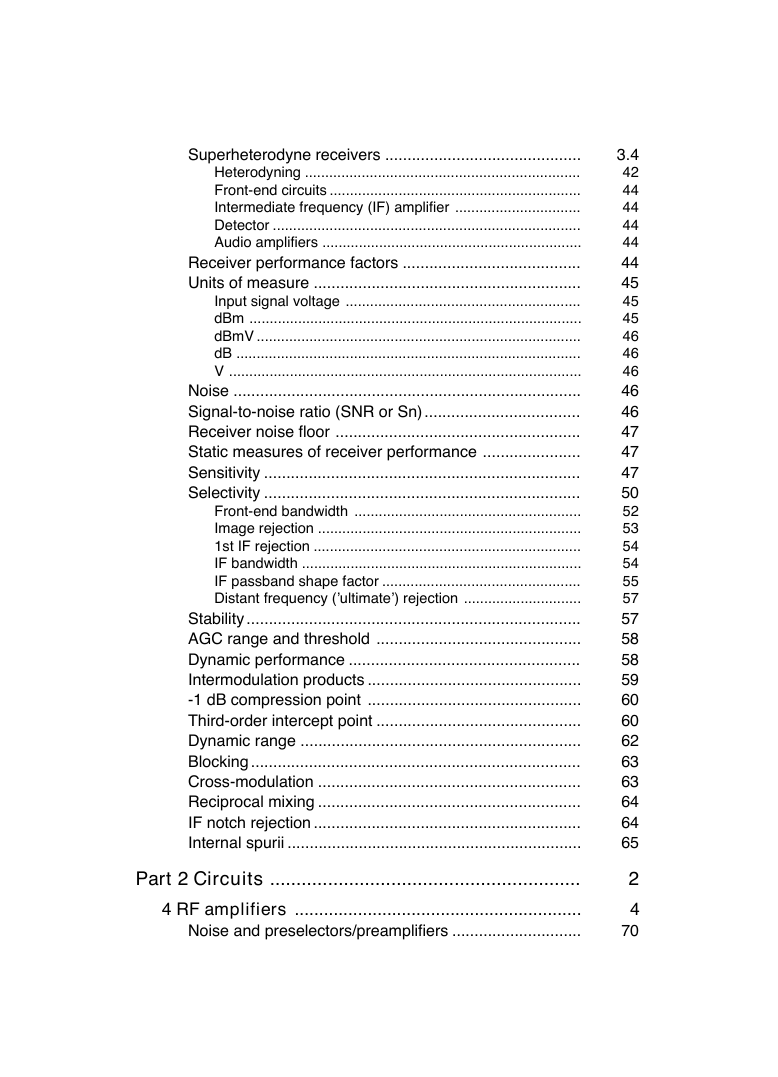
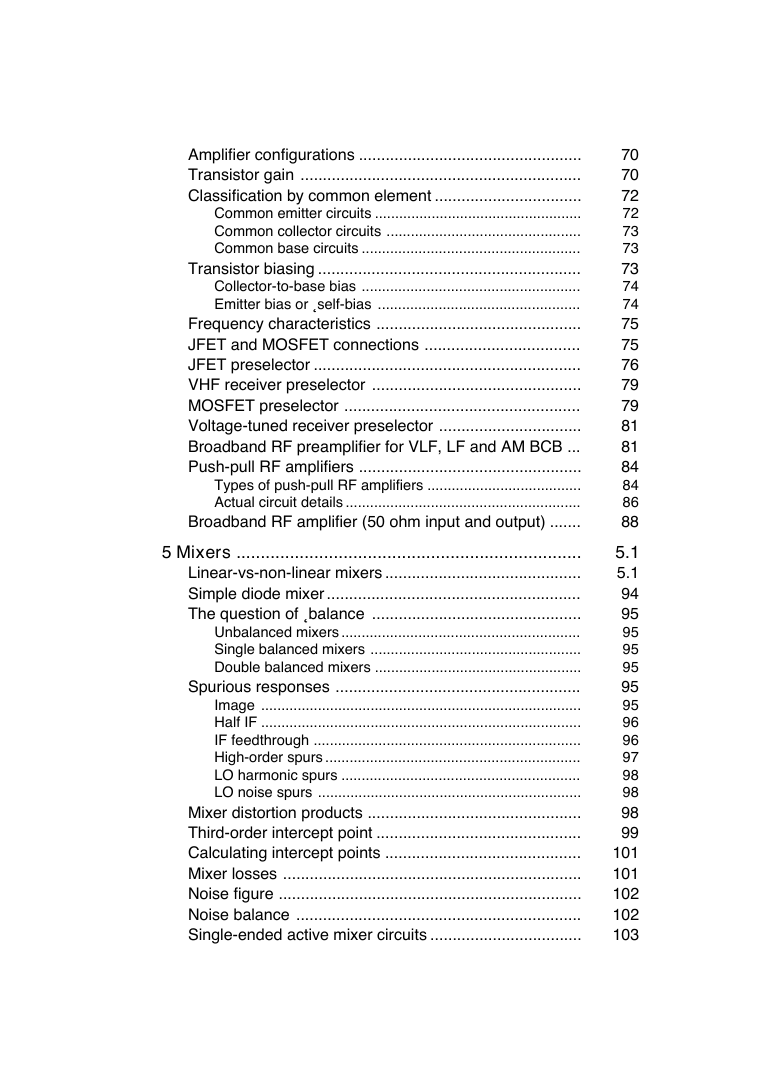
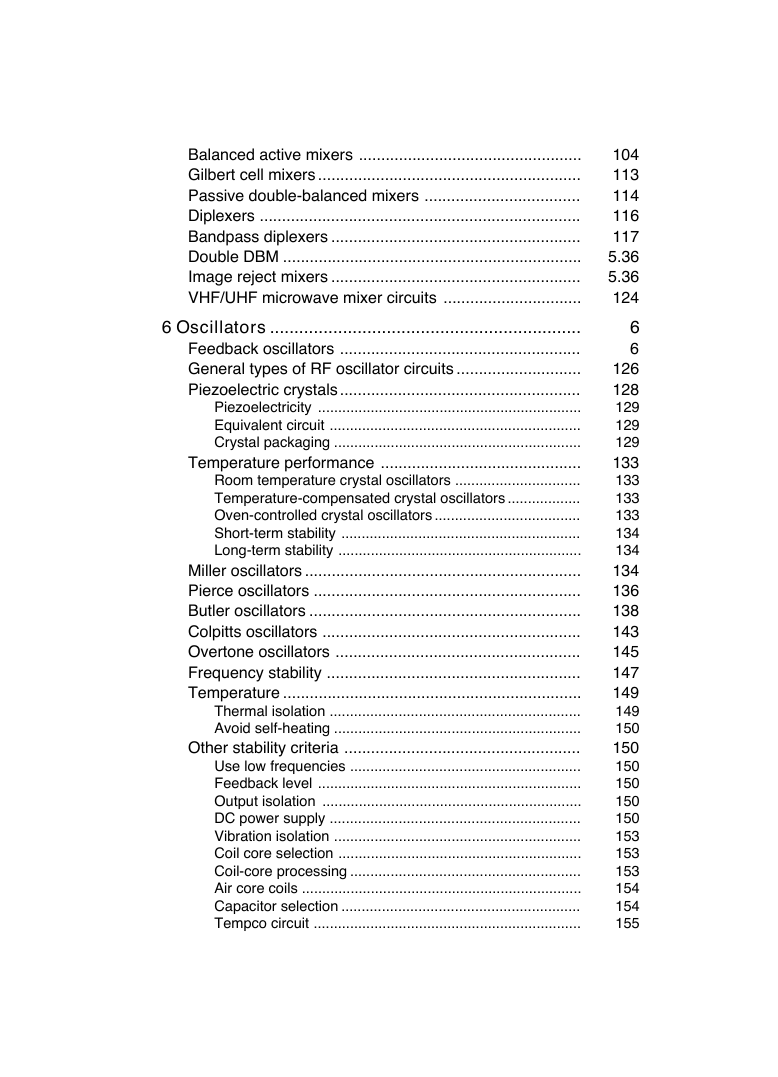








 2023年江西萍乡中考道德与法治真题及答案.doc
2023年江西萍乡中考道德与法治真题及答案.doc 2012年重庆南川中考生物真题及答案.doc
2012年重庆南川中考生物真题及答案.doc 2013年江西师范大学地理学综合及文艺理论基础考研真题.doc
2013年江西师范大学地理学综合及文艺理论基础考研真题.doc 2020年四川甘孜小升初语文真题及答案I卷.doc
2020年四川甘孜小升初语文真题及答案I卷.doc 2020年注册岩土工程师专业基础考试真题及答案.doc
2020年注册岩土工程师专业基础考试真题及答案.doc 2023-2024学年福建省厦门市九年级上学期数学月考试题及答案.doc
2023-2024学年福建省厦门市九年级上学期数学月考试题及答案.doc 2021-2022学年辽宁省沈阳市大东区九年级上学期语文期末试题及答案.doc
2021-2022学年辽宁省沈阳市大东区九年级上学期语文期末试题及答案.doc 2022-2023学年北京东城区初三第一学期物理期末试卷及答案.doc
2022-2023学年北京东城区初三第一学期物理期末试卷及答案.doc 2018上半年江西教师资格初中地理学科知识与教学能力真题及答案.doc
2018上半年江西教师资格初中地理学科知识与教学能力真题及答案.doc 2012年河北国家公务员申论考试真题及答案-省级.doc
2012年河北国家公务员申论考试真题及答案-省级.doc 2020-2021学年江苏省扬州市江都区邵樊片九年级上学期数学第一次质量检测试题及答案.doc
2020-2021学年江苏省扬州市江都区邵樊片九年级上学期数学第一次质量检测试题及答案.doc 2022下半年黑龙江教师资格证中学综合素质真题及答案.doc
2022下半年黑龙江教师资格证中学综合素质真题及答案.doc